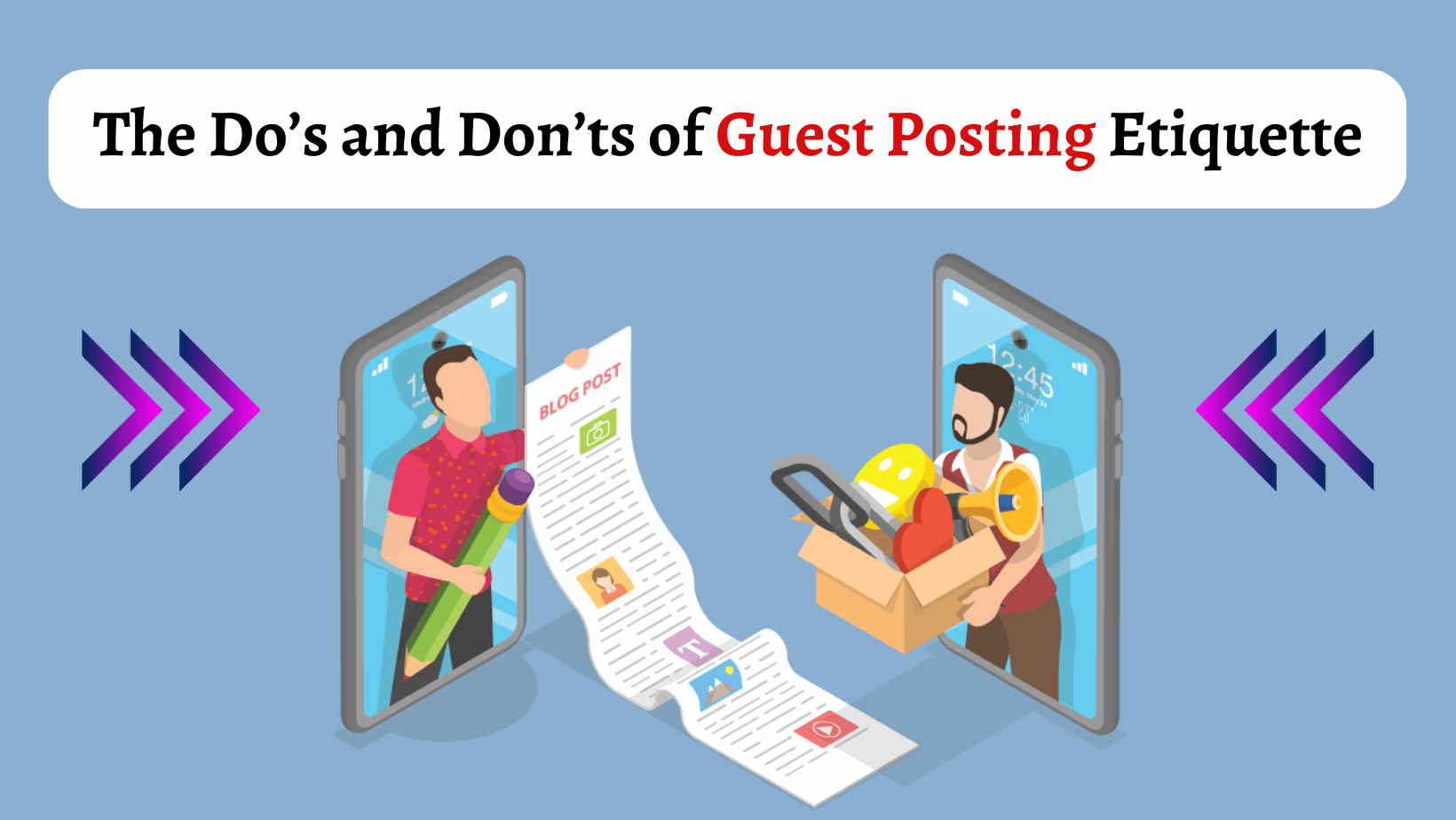
Introduction
The Do's of Guest Posting Etiquette
Research and Choose Reputable Sites:
Do: Research and identify websites or blogs that align with your niche, have a strong readership, and maintain a good reputation. These sites are more likely to provide a meaningful platform for your content.
Read and Follow Submission Guidelines:
Do: Pay close attention to the submission guidelines provided by the host site. Each platform may have specific requirements for formatting, word count, images, and more. Complying with these guidelines demonstrates professionalism.
Create High-Quality, Original Content:
Do: Write well-researched, informative, and engaging articles that provide value to the host site’s audience. Ensure your content is unique, free of plagiarism, and well-edited for grammar and clarity. Write and publish something that solves a problem or answer a query. The content should invite and inspire.
Establish a Relationship First:
Do: Reach out to the host site or blogger with a genuine interest in their content. Leave thoughtful comments, engage on social media, and build a rapport before pitching a guest post idea. Building relationships is the foundation of successful guest posting. This is also vital for high quality backlink service.
Personalize Your Pitch:
Do: Craft personalized and concise pitches when proposing guest post ideas. Explain why your content is relevant to their audience and how it aligns with their site’s themes.
Follow Up Promptly:
Do: Respond to emails and communication from the host site promptly. Timely responses demonstrate professionalism and commitment to the collaboration.
Include High-Quality Visuals:
Do: Incorporate relevant images, infographics, or multimedia elements to enhance your content. Ensure that you have the rights to use these visuals or provide proper attribution when necessary.
Promote Your Guest Post:
Do: After your guest post is published, actively promote it on your own social media channels, website, and email list. This not only benefits the host site but also helps you reach a wider audience.
The Don'ts of Guest Posting Etiquette

Ignore Submission Guidelines:
Don’t: Disregard the host site’s submission guidelines. Failure to follow these guidelines can result in rejection or a negative impression.
Submit Duplicate or Low-Quality Content:
Don’t: Submit content that has been published elsewhere or is of subpar quality. Host sites expect fresh, valuable content that enhances their readers’ experience.
Overly Self-Promote:
Don’t: Use guest posts as a platform for excessive self-promotion. While it’s acceptable to include relevant links to your own content, avoid turning your guest post into a sales pitch.
Neglect Proofreading and Editing:
Don’t: Submit guest posts that are riddled with spelling and grammatical errors. Always proofread and edit your content thoroughly before submission.
Ghost Pitch:
Don’t: Send generic, mass-pitched guest post requests to multiple sites without addressing the individual site’s content or audience. Personalization is key to successful outreach.
Be Pushy or Impatient:
Don’t: Be pushy or impatient when awaiting a response from the host site. Respect their timeline and workload. Sending repeated follow-up emails within a short timeframe can be off-putting.
Violate Copyright or Plagiarize:
Don’t: Use copyrighted images, text, or any other content without permission. Plagiarism and copyright infringement are not only unethical but can also lead to legal issues.
Abandon Your Post:
Don’t: Once your guest post is published, don’t disappear. Engage with the host site’s audience by responding to comments and sharing the post on your own platforms.
Advanced Guest Posting Etiquette

While the basics of guest posting etiquette are essential, taking your guest posting strategy to the next level involves more advanced practices:
Offer Exclusive Content:
Do: Whenever possible, offer the host site exclusive content that hasn’t been published elsewhere. This demonstrates your commitment to providing unique value to their audience.
Write for the Audience:
Do: Tailor your content to the host site’s audience. Understand their preferences, pain points, and interests, and create content that speaks directly to them. The guest post should be able to engage the audience from start to end.
Provide Value Beyond the Post:
Do: Offer to provide additional resources or engage in discussions with the host site’s audience in the comments section. This extra effort can further establish your expertise and credibility and keep the audience involved in one way or other.
Acknowledge and Share:
Do: Once your guest post is published, acknowledge and thank the host site on your social media channels and website. This fosters a positive relationship and encourages future collaborations.
